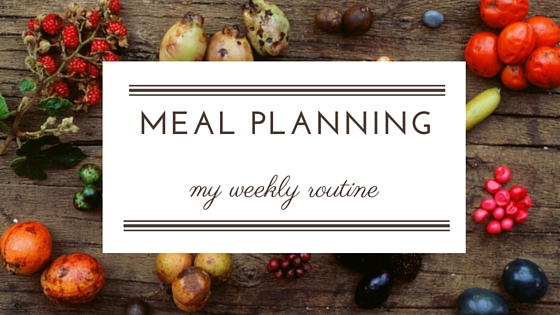Planning out meals at the beginning of the week not only helps my family eat more meals at home, but it also helps keep meals affordable and timely.

If you’ve been following along, you know I’m a big fan of meal planning. Not the kind of meal planning where you get stuck on the details, but the sort of planning where you get your basics covered, yet leave a little room for flexibility and fun.
Taking the time to plan prevents some of those “oh shoot, we have to eat” moments – ensuring that your cupboards have some nourishing foods at the ready no matter what life throws your way. For me, having dinner ideas at the ready really does help reduce in-the-moment stress and never lets my family get overly hungry while I try to mull over what miscellaneous ingredients I could throw together for a meal.
My meal planning routine is rather simple, but effective. Curious how I make it work? Here are a few of my favorite meal planning techniques to get you started.
Start with one meal. I’ll let you in on a little secret… I never plan out an entire weeks worth of meals. Nope. Never. Instead, I focus my attention on the meal that needs the most work – dinner. By having a plan in place for this meal, our family doesn’t stress out about what to eat or waste time trying to figure out what ingredients might go together. Instead, we’ve already done the leg work – allowing us to get out the door quicker if we have to or spend more time around the table when our schedule allows.
Want to have more meals at home consistently? Give focused attention to the 1 meal needing the most work. https://t.co/FRu8sItxiY
— Kati Mora MS, RDN (@KatiMoraRD) June 26, 2016
To start meal planning successfully, it’s helpful to identify which meal might benefit the most. Depending on your schedule, you may even have just one or two nightly meals that really need some work. Focus your attention there. The small amount of time you spend planning for those meals ahead of time will be worth the investment, trust me.
Don’t forget your food groups. Once you’ve decided which meals to plan, it’s time to start identifying which foods will make up that meal. Since I’m trying to feed my family of four with nutrition in mind, I often plan meals around the basic food groups. If I can get three different food groups in, I consider that a meal time success. This week, I planned out the following meals:
Grilled BBQ Chicken + grilled Balsamic glazed Eggplant and Brussels sprouts with feta cheese = lean protein + vegetables + dairy
Spaghetti sauce + lean ground beef + spinach + grain pasta + leafy green mixed salad = protein + vegetables + whole grain
Sweet Potato and Black Bean Curry = whole grain + vegetables + protein
Scrambled egg + spinach + onion + Bell pepper + cheddar cheese = protein + vegetables + dairy
And my husband planned out one… Hobo dinners. If you’re not familiar, a hobo dinner is a tin foil wrapped meal you cook out on the grill or over a campfire. Our hobo dinner typically includes lean ground beef + onions + Bell peppers + potatoes + cheese = protein + vegetables + grain + dairy
This planning style ensures we have a strong meal structure in place, but still allows for flexibility. If we have extra ingredients on hand, flavorful herbs or spices, or need take the flavor profile up a notch by making a few tweaks, we can do that. But no matter what, we’ve got a pretty solid start.
Check your phone. Over the past few months, Aaron and I have been taking our finances pretty seriously. God has blessed us both with jobs and opportunity, and we both felt pretty convicted a few months ago to stop wasting the financial resources we’ve been blessed with. That means I’m always on the hunt for a good deal. Thanks to apps like Ibotta and Checkout51, its easy to save a few extra dollars here and there. Of course, this means planning discounted items into your weekly meal rotation. And be careful – sometimes you’ll still save more money by buying the generic brand at the store or skipping the deal all together. Only use discounts on foods you’ll actually utilize.
If you shop at Kroger, you’ll want to download their app for extra savings. I use it all the time to clip digital coupons. And if you shop at Walmart, try there Savings Catcher app.
Keep your plan visible. After I’ve planned out my meals, bought the ingredients I need, and submitted my receipts for rebates, it’s time to put those meals into action! I find it helpful to keep the list on my fridge so that in case I forget what I planned (which I often do), I can quickly refer to the list.
Meal planning can serve as a great tool to help you eat more nutritious, affordable meals at home. I hope you’ll enjoy the process. And of course, if you have any meal planning secrets, I’d love to know all about them!
Disclaimer/Disclosure: A referral link to the rebate app, Ibotta, was utilized in this post. For more information on Ibotta’s referral program, visit the Ibotta website.

